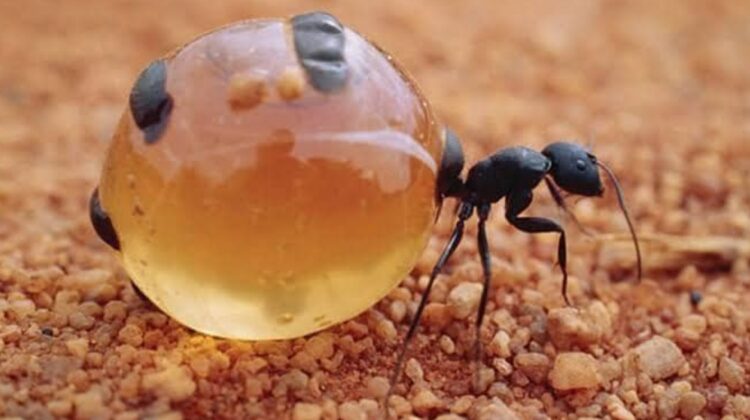
Imagine a tiny living pantry! In the sun-drenched lands of Oaxaca, Mexico, dwells a remarkable creature: the honey ant. Forget honeycomb – these industrious insects are nature’s own candy dispensers.

Meet the “chindudis,” as they’re called in Oaxacan villages. Unlike their bee counterparts, chindudis don’t store their sweet treasure in a waxy structure. Instead, a special type of worker ant transforms its abdomen into a bulbous sac, a glistening reservoir overflowing with a nectar-based honey. This transformation is no accident – these “repletes” become living pantries for the colony, ensuring a steady supply of sustenance during harsh, dry seasons.

Unearthing these edible marvels is like a treasure hunt. During the day, follow the trails of busy chindudis in desert areas or Mixteca communities. With a careful hand, dig around their anthills, and you might just discover a hidden trove of nature’s candy.

But the true magic lies in the harvest. The honey boasts a symphony of flavors, each sip a testament to the diverse flowers the ants visit under the cloak of night. The best part? You can enjoy this sweet treat guilt-free! Gently extract the honey, leaving the chindudis unharmed. These resourceful creatures will simply refill their sac with more nectar, ready to continue their role as living honey pots.

The honey ant is a captivating example of nature’s ingenuity. It’s a testament to the resilience of life in arid environments and the fascinating adaptations that allow creatures to thrive. So, the next time you hear about Mexico’s wonders, remember the chindudis – a tiny powerhouse that proves nature has a sweet surprise waiting around every corner.

So interesting.